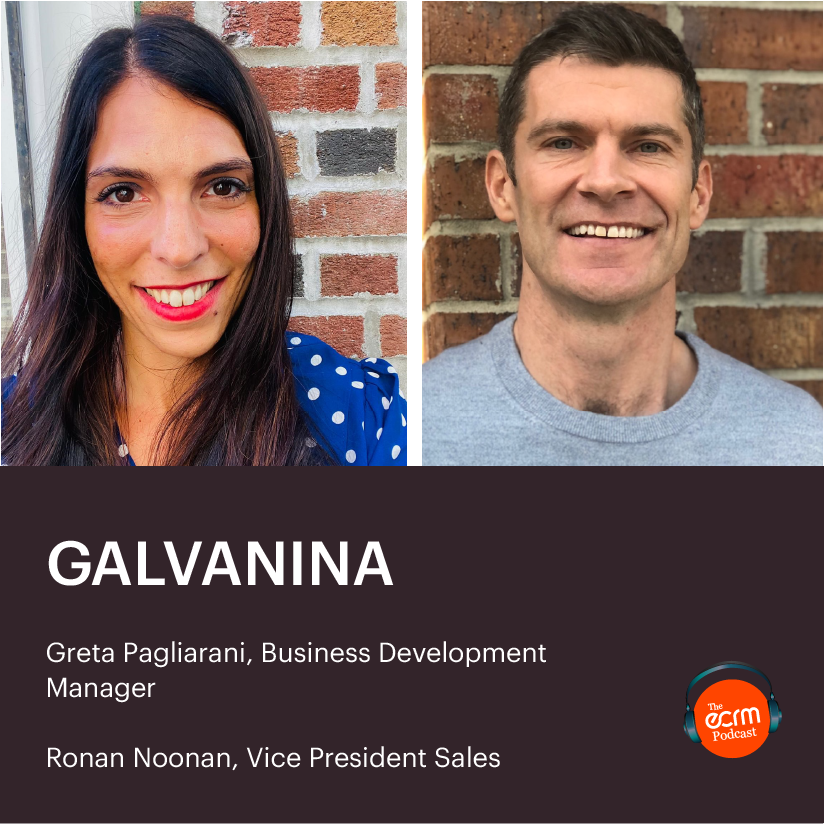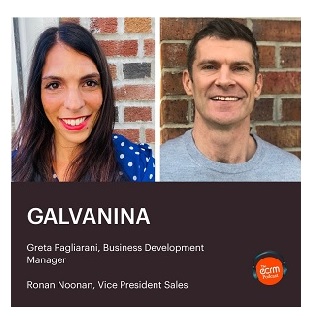Breaking Into the U.S. Market: Best Practices for International Brands 2/4/2021
 International brands looking to break into the U.S. retail market face many challenges, such as connecting with the right buyers, setting up a distribution plan, and determining the right strategic marketing mix to drive consumer demand in locations that have different trends and cultures than their home markets.
International brands looking to break into the U.S. retail market face many challenges, such as connecting with the right buyers, setting up a distribution plan, and determining the right strategic marketing mix to drive consumer demand in locations that have different trends and cultures than their home markets.
Galvanina, an Italian beverage supplier which produces and bottles mineral water, organic carbonated soft drinks, mixers and iced teas, has cracked the code to success in the U.S., which is among the 50 countries in which its products can be found. The company launched nearly a century ago, taking its name from a mineral water spring near the hills of Rimini, and since 1987 has expanded distribution of its branded and private label beverages among the largest U.S. retailers.
In this episode of The ECRM Podcast, ECRM’s Joseph Tarnowski speaks with Galvanina’s VP of Sales Ronan Noonan and Business Development Manager Greta Pagliarani about the brand and its products, and how the wellness trend is impacting the beverage industry. They also do a deep dive on best practices for international brands looking to enter the U.S. retail market. And since both are veterans of ECRM's programs, they also provide tips on how international brands can get the most from their buyer meetings on the ECRM Connect platform.
Below is an excerpt from the interview, in which we focus on Noonan’s discussion of the strategies and actions that have contributed to Galvanina’s success in the U.S., and his recommendations for international brands looking to get a foothold in this country’s challenging retail arena. For the full interview, check out the podcast or the video below.
LISTEN TO THE PODCAST
ECRM: What are the key factors that contribute to an international brand’s success here in the United States?
Noonan: It starts with having a unique, high-quality product that you're able to stand behind. You need to understand that when you are pitching your product to some of the biggest retailers, there are 100 other suppliers that want to take your space. So be the leaders in quality, be the leaders in innovation, and come to the table with solutions to potential problems that may arise, such as poor congestion, pricing issues, minimum order quantities. You must be able to develop a program for retailers that can be sustainable over a long time period.
ECRM: With so many moving parts, transparency must be very important.
Noonan: It is. When you're sitting down with a potential retailer customer, you have to be very transparent about your process, your price points, and your commitment to schedules. We have a lot of experience in creating unique programs, and we've had to be very transparent with every customer on our sourcing lead times, our production lead times, and our route-to-market strategies, and all of this requires a considerable amount of detail and effort. On top of this, any deal needs to be financially feasible for all parties, a true win-win situation. Don't do anything that is going to put you in financial jeopardy.
ECRM: What does an international brand need to have in place before seeking to enter the U.S. market?
Noonan: First, examine the market research and data. For example, if I'm in Europe and I look at the U.S. as being an entry point for a certain category, I'm going to look at the trends over the last couple of years. If I see a trend that's growing, I’ll find where the demand is for this trend. Then I'll evaluate the competition that we would face if I entered this market. It all boils down to your unique selling point. What do I have that you the competitors don’t? What's going to give us a competitive advantage?
Once you've established your unique selling point, you then have to translate that unique selling point into relevant data that you can present in front of either a distributor or a retailer. If the retailer is interested, they can offer me some distribution points. Then the distributor becomes my step in the door. From there I need to figure out how I’m going to increase the rate of sale to drive more distribution for the future, and to make sure that this program is sustainable over a long term. So it’s important to do a market analysis of where you want the brand to go over the next five to 10 years. Every year there's going to have to be a continuous investment to ensure that that brand is succeeding – essentially a strategy for how you are going to make the retailer’s business more money, and how you’ll create excitement with the customer to grow the category.
ECRM: Is there a typical path into the U.S., such as a retailer, distributor, broker, or could it be a mix of these?
Noonan: It’s a combination of these. Everybody's different. You'll have retailers who might say that this is something we really need, and here is how we recommend you moving forward to bring this in. But we also have to remember that in order to make any program profitable for an importer, the largest retailers in the U.S. are probably going to have a link between the importer and their business, and it’s usually a distributor or a broker. So, a lot of those companies will position you with one of their brokers or with their existing distributor, who can then lay out the roadmap to be successful within the country.
There's a lot of layers to get through between going from the buyer meeting to actual project implementation. I would say, on average, if you have a meeting today, it could take up to one year before you even see a product entering the country. And then probably another couple of months for a product to hit the shelf.
ECRM: With so many moving parts, patience is very important.
Noonan: Yes. When you think about the journey across the pond from Europe to the U.S., there is a considerable amount of lead time. And the logistics and freight industry right now is going through considerable hurdles, because there's a lot of congestion at ports. It will ease up eventually, but if you are a new importer into this country right now, you're going through something that we hadn't foreseen.
Which brings up another point, which is having a business continuity plan. It’s important to have an emergency plan in place in case something goes astray in the short term, because you don't want a retailer to have an open space on the shelf where your product is supposed to be. A lot of that you learn from experience. And you make a great point about patience, because everybody wants things to happen today. We're no different. When we meet with a retailer, we get all excited because we want to innovate against beverage trends that are in demand, but there are sourcing and production lead times of course, and those can take a considerable duration. From a project’s initiation to completion for us with an existing customer, you're still talking six to 12 months.
ECRM: If I'm an international supplier participating in a U.S.-focused ECRM program, and I have 10 or 20 minute meetings with buyers, what are the top three things I should focus on in those conversations?
Noonan: The first thing is to focus on the unique selling point of your product. Next you should focus on the trends that you're seeing in the marketplace that can make the retailer believe that this product will succeed. And then the third thing – and this is perhaps the most relevant – is how is this program going to monetize over the long-term future? Because when you peel back the band-aid on any project, you have to realize that everybody's in this for capital gain. There's no point entering a business world if you're not in it to make a profit. And every retailer in this business is going to say, how are you going to make my company more money? And rightfully so; that's part of commerce. That’s why we are all here.
-->


Kurt began his career with ECRM in 2002. Over his tenure, he has served as Web Designer, Software Engineer, Application Interface Architect, Chief Architect, and currently plans, directs and sets the strategic direction for ECRM’s marketing strategy and international development.